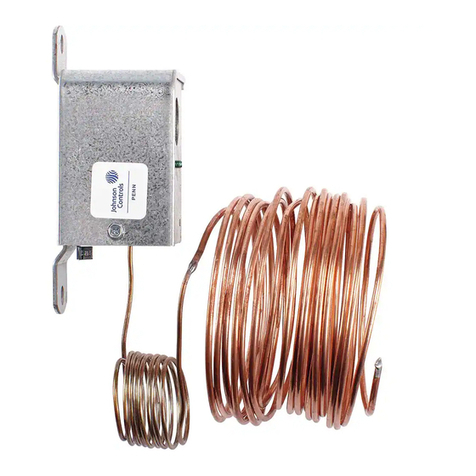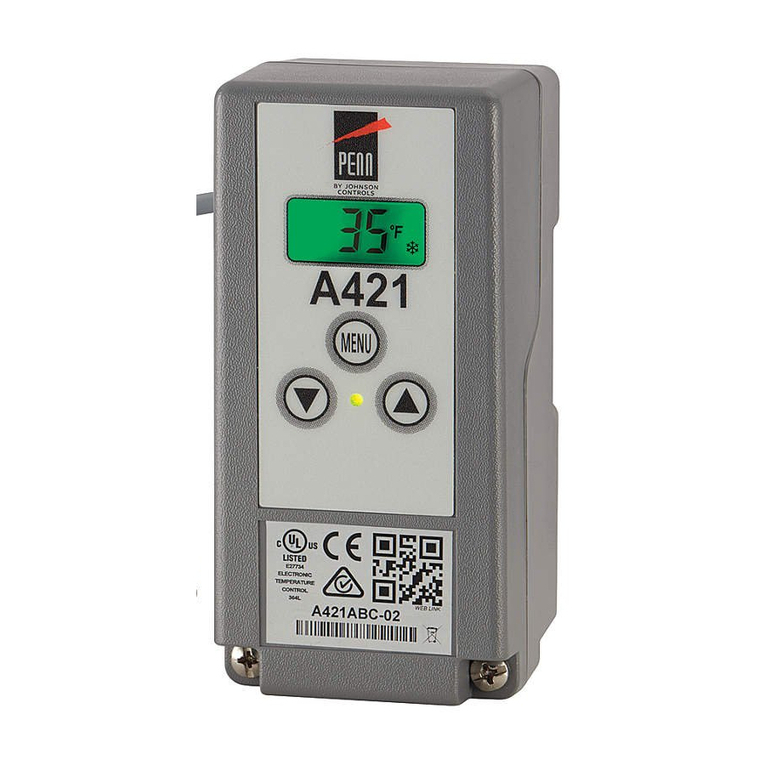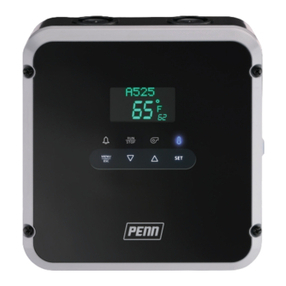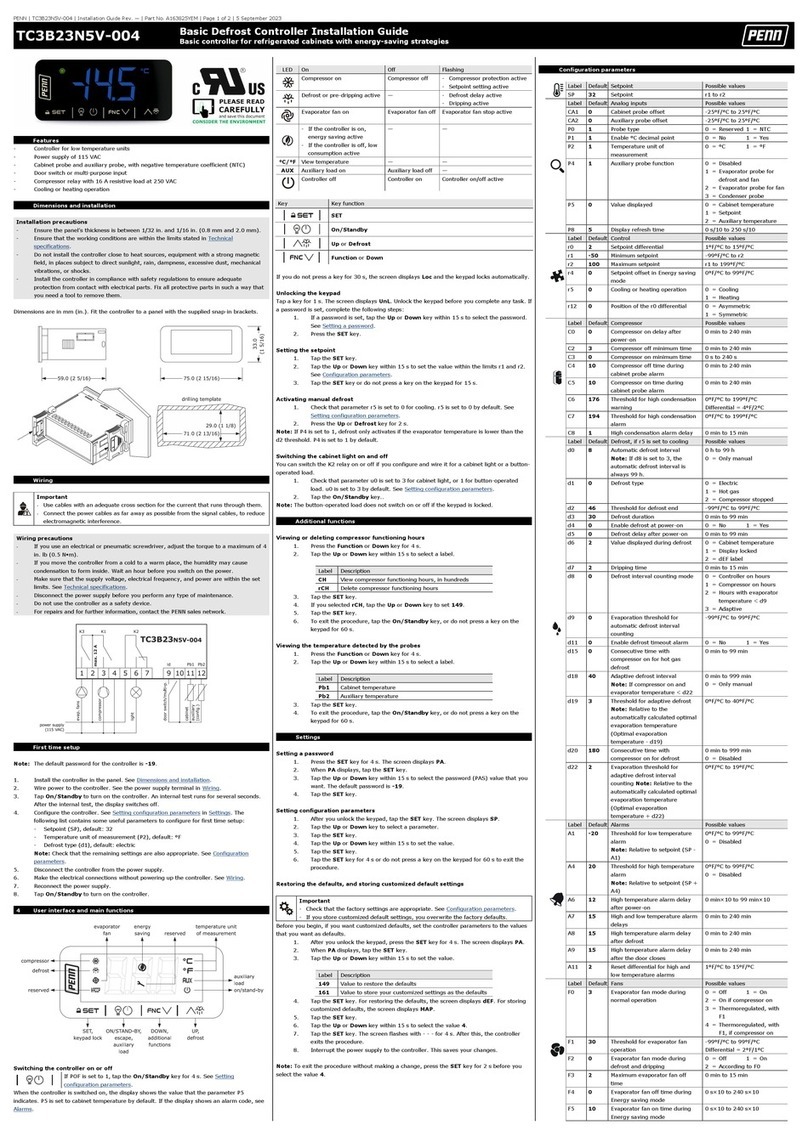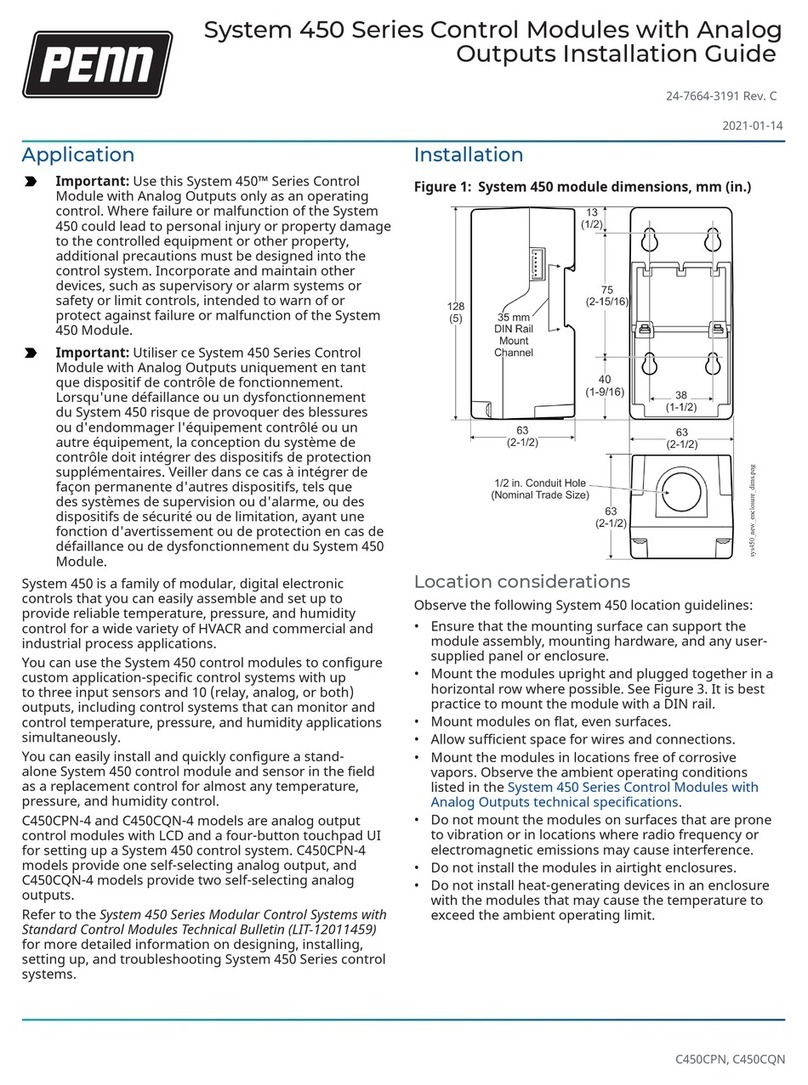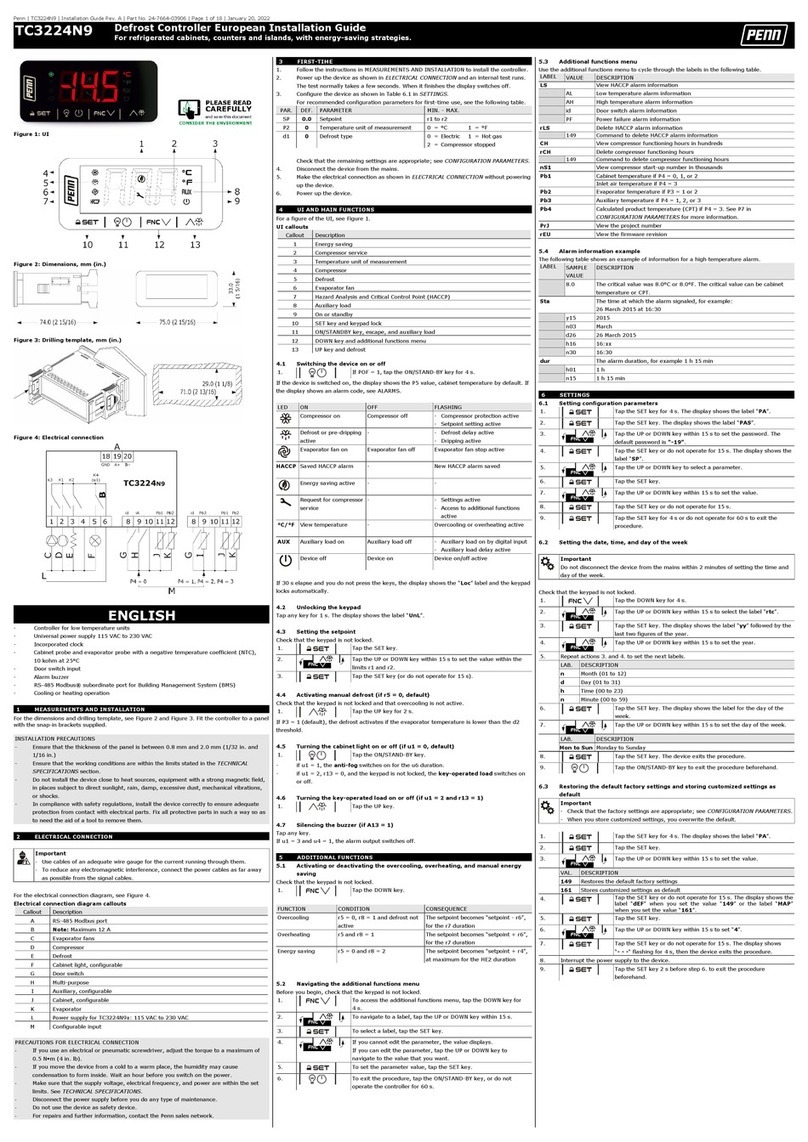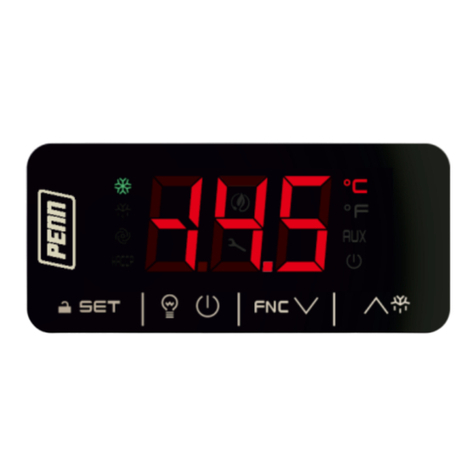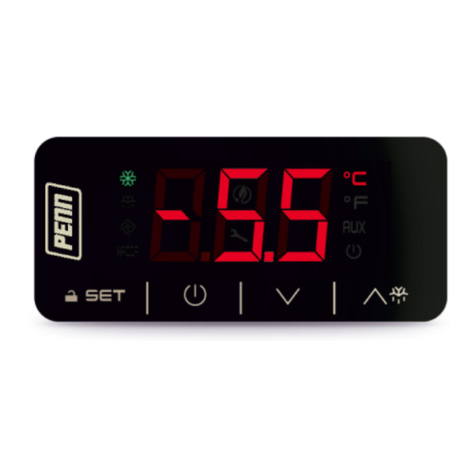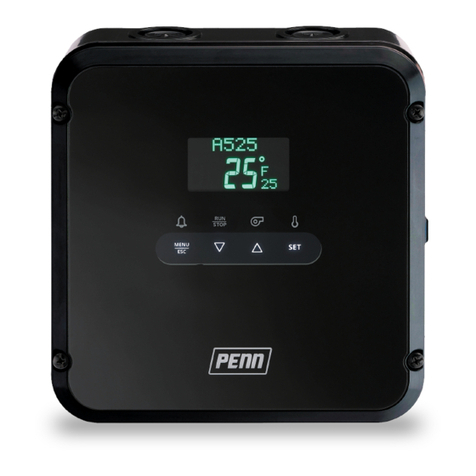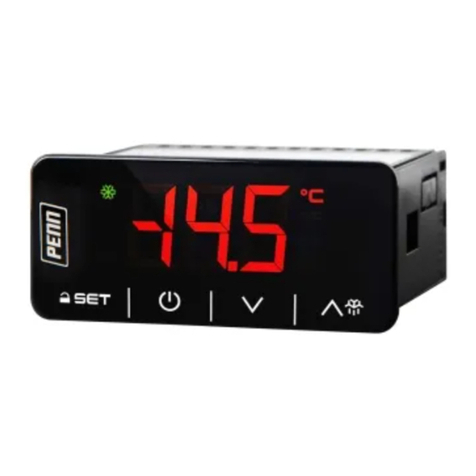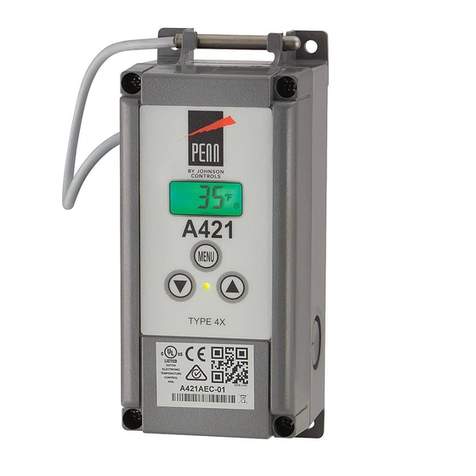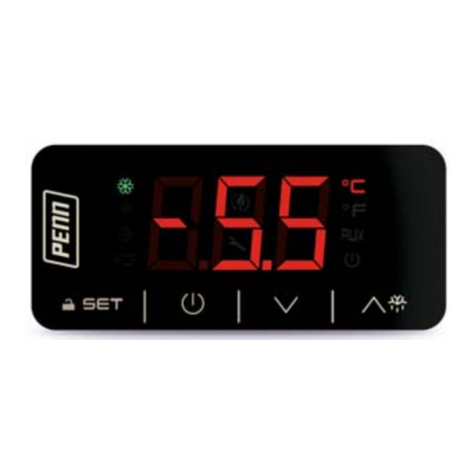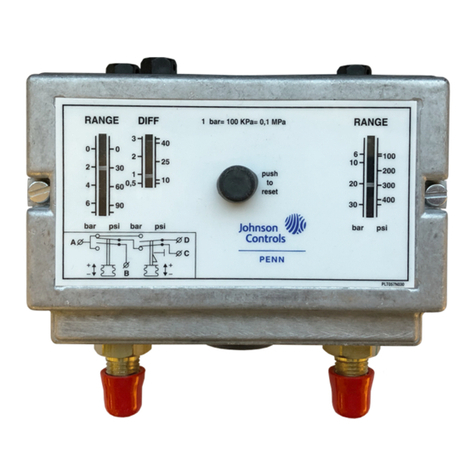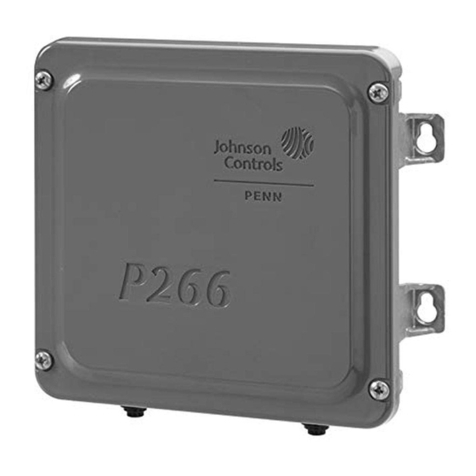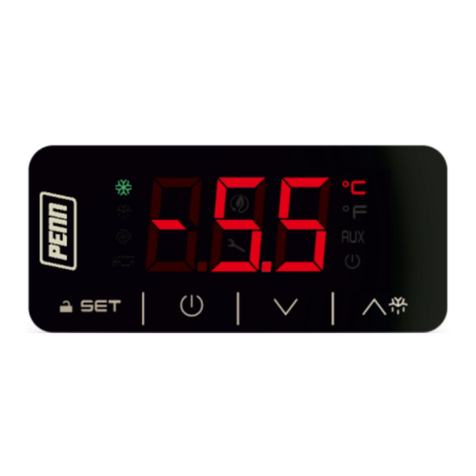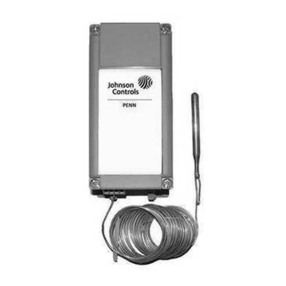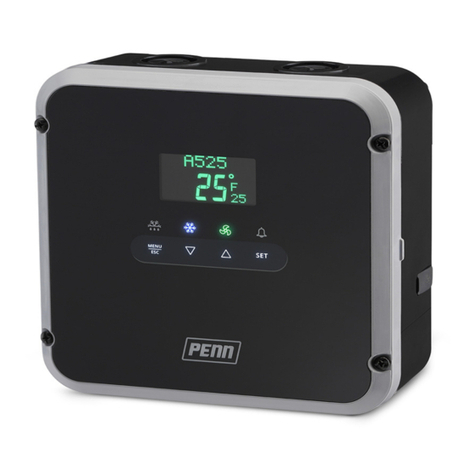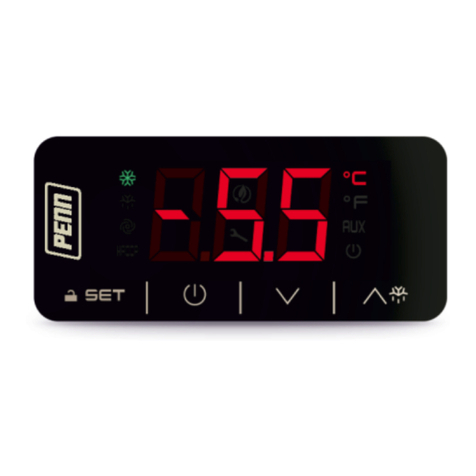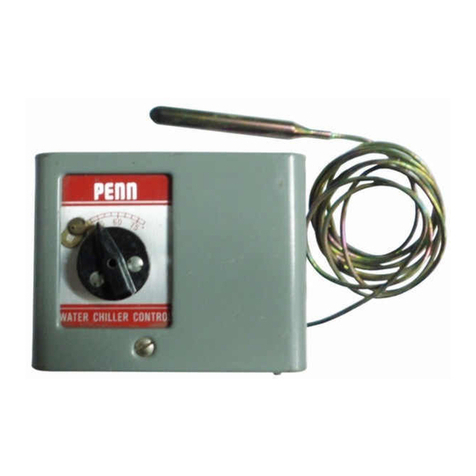
PB_P216_11 2016
3
Wiring
WARNING: Risk of electric shock.
Disconnect or isolate all power supplies before
making electrical connections. More than one
disconnect or isolation may be required to
completely de-energize equipment. Contact with components
carrying hazardous voltage can cause electric shock and may
result in severe personal injury or death.
IMPORTANT: Do not connect supply power to the P216
Series controller before finishing wiring and checking all wiring
connections. Short circuits or improperly connected wires can
result in damage to the P216 series controller and void any
warranty.
IMPORTANT: Do not exceed the P216 Series Fan Speed
Controller electrical ratings. Exceeding P216 Series controller
electrical ratings can result in permanent damage to the P216
Series controller and void any warranty.
IMPORTANT: Use copper conductors only. Make all wiring in
accordance with local, national, and regional regulations.
IMPORTANT: Electrostatic discharge can damage P216
controller components. Use proper Electrostatic Discharge
(ESD) precautions during installation and servicing to avoid
damaging P216 components.
• Ensure that the wires between the P216 Series
controller and the fan motor do not exceed 15 m.
• Wires connected to the line-voltage terminal block must
be 3.31 mm2(12 AWG) or smaller.
• Low-voltage wires must be less than 30 m.
Description
A DIP switch will be used to select one of 4 different
pressure ranges. There is one potentiometer to manually
adjust the setpoint.
• There is one potentiometer to manually adjust the
minimum speed.
• A green LED will indicate that power is applied.
• Two 3 position screw terminal blocks will be used to
connect the 50 bar transducers.
• A 3 position screw terminal block will be used to select
HP or reverse modes.
Contacts between HP and C will run the fan at full speed.
Contacts between REV and C will increase the fan speed
as pressure decreases.
• Adjustable 4 to 10 bar setpoint, prop band xed at 2.0 bar
• Adjustable 8 to 14 bar setpoint, prop band xed at 2.5 bar
• Adjustable 14 to 24 bar setpoint, prop band xed at 4.0 bar
LED
M1 L1
L2/N
L2/N
HP C REV
V P2 C
V P1 C
20% 100%
-
+
Figure 1
CAUTION
The P216 is intended to control equipment under
normal operating conditions. Where failure or
malfunction of the P216 could lead to an abnormal
operating condition that could cause personal injury or
damage to the equipment or other property, other devices
(limit or safety controls) or systems (alarm or supervisory
systems) intended to warn of or protect against failure or
malfunction of the P216 must be incorporated into and
maintained as part of the control system.
EMC
The controller does have a built-in suppression lter
and meets all required EC directives. Please note that
when two or more EMC compliant components are built
together the total system may not be compliant. To make
the total system compliant is the responsibility of the
producer.
Note:More motors can be wired in parallel, provided that
the total current will not exceed 12 A rms.
Input connections
The input can be connected as indicated in Figure 1.
If the distance between the transducer and the controller
exceeds 30 metres, shielded cable has to be used.
Heatpump
and reverse action
terminal
Power supply
and motor terminal
Earth ground
connection
Two pressure
transducers inputs
Setpoint
Min speed
DIP switch block
